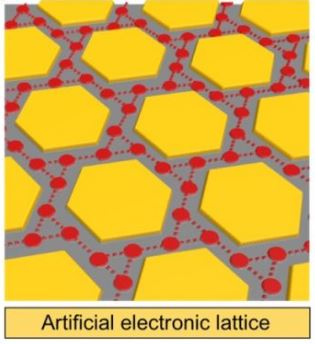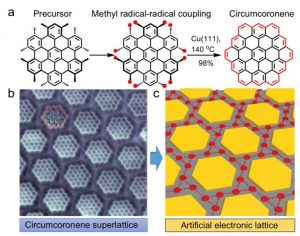
A NUS research team led by Prof Jiong LU, in collaboration with Prof Jishan WU’s research group, both from the Department of Chemistry, NUS has developed a route for synthesizing the hexagonal zigzag-edged nanographene, known as circumcoronene, on a copper (111) substrate. The reaction route relies on the robust dehydrogenative coupling of the methyl groups at the adjacent sites of the rationally-designed precursor molecules, followed by the ring closure reactions on the metallic substrate. This forms the elusive circumcoronene molecule consisting of 19 fused benzene rings (Figure (a)). Importantly, such a synthetic route allows for an ultra-high yield of the reaction product (up to 98%), which has not been attained to date. Prof Lu said, “Our findings open up a new route for the ultra-high yield synthesis of nanographene and atomically-precise fabrication of synthetic two-dimensional lattices with unique electronic properties for future technological applications.” Read more on their discovery here.
The figure below shows the transformation from the precursor molecule to the atomically-precise circumcoronene superlattice. (a) The precursor molecule undergoes a cyclodehydrogenation chemical process with the use of copper (111) substrate which forms the circumcoronene. (b) High-resolution image of the circumcoronene superlattice obtained by using a non-contact atomic force microscopy with a cobalt tip. (c) Schematic illustration of the chiral Kagome-honeycomb lattice. [Credit: Science Advances]

